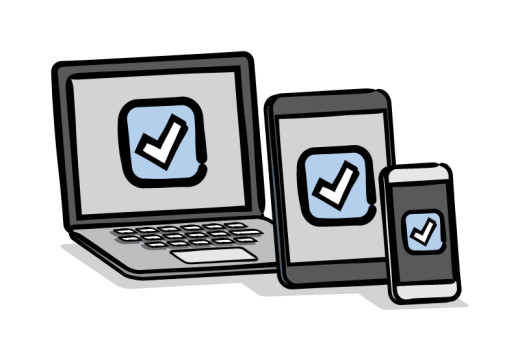
We’ve seen this building for years – the lines are blurring between mobile and desktop activities for consumers. We’re fast approaching the tipping point where the actual device you’re using – no matter the activity – becomes irrelevant.
More than half of smartphone owners with bank accounts use mobile banking, and almost 60 percent of Black Friday’s web traffic came from mobile devices, though it only counted for a third of online purchases. Shifting between mobile and desktop is already a seamless and unquestionable part of our digital presence.
Even tasks like banking and shopping, which a few short years ago would have been difficult to imagine existing on mobile, are now dominantly mobile activities. Consumers are becoming device-agnostic.
There is extraordinary value in an accurate and scalable cross-device framework for enterprises.
From email and research, to purchases and social networking, cross-device is the basis for every action we take as consumers on the Internet. We’ve come to expect tools and apps that take advantage of a cross-device framework.

Devices aren’t relevant anymore, people are. Any business building tools and apps should absolutely think across all devices in order to deliver better content and services.
Born from ad-tech, destined for much more
Players in the digital advertising space were the first to recognize the need for a pervasive cross-device identity solution. These providers created an intelligence layer comprised of data and insights from desktop and mobile web, mobile apps, and even emerging devices like connected TVs and smartwatches. That data was originally used to improve online digital marketing, and fueled the programmatic advertising market.
Now, as enterprises enter the game, they can take advantage of that data layer to develop the next generation of tools and services to address consumers. And those services will address not just the 100 billion daily global ad requests, but the two to three trillion daily global internet transactions – everything from search queries and html requests to logins and purchases.
Cross-device may have been built for ad-tech, but its implications go far beyond it.
Here are a few examples, outside of ad-tech, that a cross-device identity framework can enable.
Uninterrupted content, even when switching screens
Imagine logging in to your computer and browsing through pages of products on an e-commerce site like Sears, Crate & Barrel or The Home Depot, or starting to read an article on CNN or The New York Times. Now let’s say, in the middle of your session, you have to shut your computer.
What if you could pick-up your phone and jump to page eight of the product listings? Or seamlessly finish the article from where you left off?

It’s a similar concept to Apple’s Handoff functionality, but on steroids – across devices, operating systems, and even between web and app environments.
E-commerce recommendations across the Web
If you’re looking to buy a new shirt, you might check multiple e-commerce sites and apps before making a purchase decision.
Right now, as you move between the Macy’s, Bloomingdale’s and Nordstrom e-commerce properties, there’s a limited sense of who you are and what you’re looking for, even at an anonymous level. On every new site you have to locate the section for shirts, and then select the right sizing and color.
Picture the ease and seamlessness of a site that knows what you were looking for the moment you arrive, without ever logging in.
Fraud detection and identity management
From online check-outs to banking login screens, sites today use tools like captchas and two-step verification to confirm a consumer’s identity.

If Bank of America, Chase and Citi, or credit card companies like Visa or MasterCard knew which devices you own, and where you and your devices are located, these sites could block another person or bot from logging in on an unknown device in a new location. Likewise it could separate real devices from bot devices.
It’s likely not a complete solution, but part of a multi-layered fraud detection program.
A cross-device technology layer can be an unobtrusive addition to everything from consumer-focused experiences like e-commerce and online banking to CRM and business intelligence platforms.
Cross-device knowledge is the platform on which these experiences will be built. Like internet browsers fueled enterprises in the late 1990’s, and mobile improved businesses in the late 2000’s, cross-device intelligence will inspire the next generation of unique consumer and enterprise experiences.
Read next: 8 tips for measuring e-commerce ad campaigns
Get the TNW newsletter
Get the most important tech news in your inbox each week.




